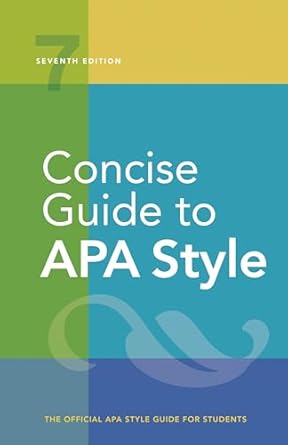[toc]
quotation mark usage a comprehensive guide
Concise Guide to APA Style: 7th Edition (OFFICIAL)
Page 111 Review
The Nuances of Quotation Marks: A Detailed Analysis
Quotation marks, often overlooked, are essential punctuation marks with specific rules governing their usage.
This analysis delves into the guidelines for using quotation marks, particularly those not directly related to direct quotations (as covered in Sections 8.25-8.34).
Placement of Quotation Marks with Other Punctuation
The placement of quotation marks relative to other punctuation is critical for clarity and adherence to stylistic conventions.
According to the text, “Place commas and periods inside closing quotation marks.
Place other punctuation marks (e.g., colons, semicolons, ellipses) outside closing quotation marks.” This distinction ensures readability and prevents ambiguity.
Specific Uses of Double Quotation Marks
The text highlights several specific scenarios where double quotation marks are necessary:
Referring to Linguistic Examples
Double quotation marks are used “to refer to a letter, word, phrase, or sentence as a linguistic example or as itself.” Examples include “the letter ‘m’,” “the singular ‘they’,” and “answered ‘yes’ or ‘no’.” This usage helps distinguish the referenced item from the surrounding text.
Presenting Stimuli in Text
Quotation marks are employed “to present stimuli in the text (long lists of stimuli may be better presented in a table, where quotation marks are not needed).” An example given is: “The stimulus words were ‘garden,’ ‘laundry,’ ‘briefcase,’ and ‘salary’.” Using quotation marks in this way clearly identifies the stimuli being presented.
Reproducing Test Items or Instructions
When reproducing material from test items or verbatim instructions, quotation marks are used: “to reproduce material from a test item or verbatim instructions to participants (if instructions are long, present them in an appendix or set them off from text in block quote format without quotation marks; see Sections 1.14 and 8.27).” For instance, “The first item was ‘How tired do you feel after a long day at work?’” or “Participants read, ‘You can write as much as you like when answering the questions’.”
Introducing Ironic Comments, Slang, or Invented Expressions
The text specifies using quotation marks “to introduce a word or phrase used as an ironic comment, as slang, or as an invented or coined expression; use quotation marks only for the first occurrence of the word or phrase, not for subsequent occurrences.” The example illustrates this point:
First occurrence: considered “normal” behavior
Subsequent occurrence: normal behavior
First occurrence: called a “friendly link”
Subsequent occurrence: a friendly link
This distinction avoids overuse and maintains clarity.
Introducing a Label
Quotation marks are used “to introduce a label; after the label has been used once, do not use quotation marks for subsequent occurrences.” The example given is: “The image label changed from ‘spiderweb’ to ‘dartboard.’ The spiderweb and dartboard labels…” This is similar to the use with slang or ironic comments, emphasizing the introduction of the term.
Beyond the Explicit Rules
While the text provides specific rules, it’s important to note the underlying principle: quotation marks serve to isolate and highlight specific words, phrases, or pieces of text for a particular purpose.
Whether it’s to denote a linguistic example, present a stimulus, or introduce an ironic term, quotation marks guide the reader in understanding the author’s intent.
The Importance of Context
Ultimately, the proper use of quotation marks depends on the context.
While the rules provide a solid foundation, a keen understanding of the purpose and intent behind their use is crucial for effective communication.
The example “Instead of referring to someone as a ‘defective child,’ talk about a ‘child with a congenital disability’ or a ‘child with a birth impairment’,” illustrates the importance of choosing appropriate language and using quotation marks to highlight problematic terminology.
Buy full ebook for only $18: https://www.lulu.com/shop/american-psychological-association/concise-guide-to-apa-style-7th-edition-official/ebook/product-rmzpq54.html?page=1&pageSize=4
Quotation Mark Usage A Comprehensive Guide
Read more: Mastering Review Citations: A Comprehensive Guide


Leave a Reply